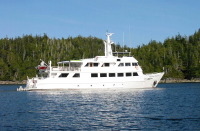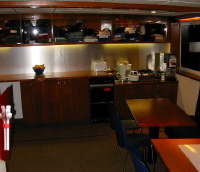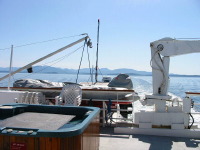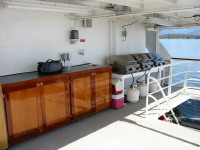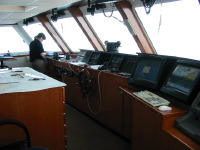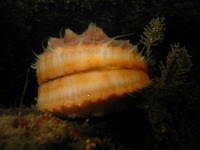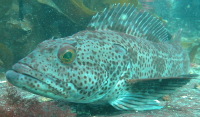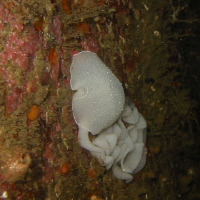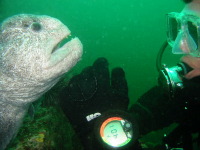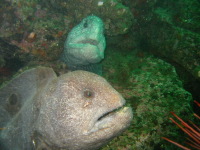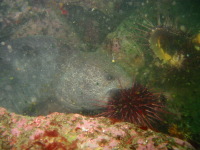The Vanlene was one of the last bulk loading cargo ships built before the advent of containerized cargo, so it was obsolete in only a few years. It was sold to a Greek firm and used as a tramp steamer, meaning that it was operated without spending money on maintenance or apparently safety. It was sailing from Japan with load of Dodge Colts. The radar wasn't working and it sailed directly into a rocky island off the west coast of Vancouver Island. It ran aground with the bow above water. The forward gantry crane and deck around it was cut away to allow about 100 of the cars to be salvaged from above the high water line before the ship slid back into the water. The rest of the cars were left in the ship. They are still there in various stages of decomposition. There is a red car in the aft cargo hold that is still intact up to having the sticker on the windshield, but it is a ways back and wreck penetration experience is recommended to see it.
We didn't get quite deep enough to see any cars, and I didn't feel safe doing a penetration. This is an actual wreck, quite unlike the Tibbets. The Vanlene is a huge wreck over 440 feet long and running from about 50 feet to over 125 feet deep. Most of the aft is still together. There is much large structure and huge plates and beams, more than you could see on a single dive. I could spend a couple days diving it and not really see all of it. I just wish that some of my photos had turned out good enough to share.


